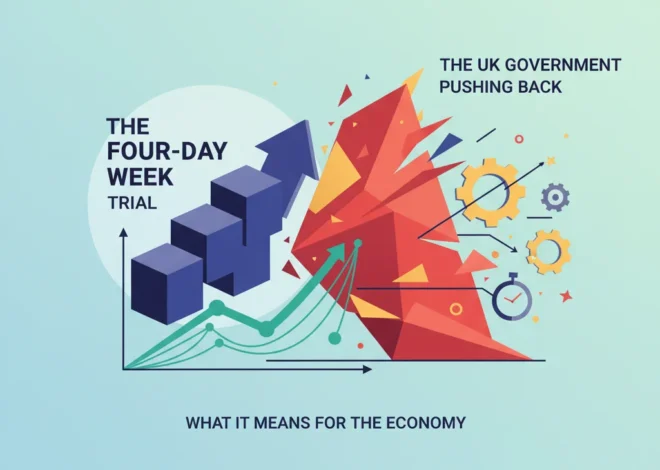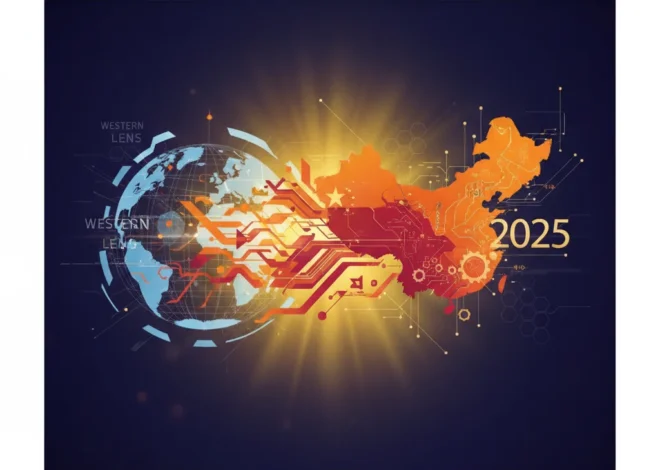
The View from the 86th Floor: How One Office Symbolized an Era of Finance and Foretold Its Transformation
In a brief, poignant letter to the Financial Times, a reader named Doris Straus offered a window into a world that feels both recent and impossibly distant. Her entire message was just one sentence: “In the late 1990s, I worked on the 86th floor of the World Trade Center.”
This single statement, titled “The best office I ever had,” does more than evoke a memory. It encapsulates the zenith of a particular era in global finance—an era defined by physical proximity, centralized power, and the unshakeable belief that the epicenters of commerce were forged in steel and glass. The World Trade Center wasn’t just a collection of offices; it was a symbol of the globalized economy, a vertical city where a significant portion of the world’s financial heartbeat could be felt.
Working on the 86th floor in the late 1990s meant being perched atop the world, not just literally, but figuratively. It was to be at the core of a booming stock market, fueled by the dot-com revolution and an unprecedented period of economic expansion. Yet, looking back from our current vantage point, this memory also serves as a powerful starting point for a much larger story: the dramatic and necessary decentralization of finance, work, and power. The journey from that office on the 86th floor to the globally distributed, digitally-native financial ecosystem of today is one of tragedy, resilience, and relentless innovation.
The Apex of Centralized Power: Wall Street in the Dot-Com Boom
To understand the significance of an office in the World Trade Center during the late 1990s, one must recall the economic climate of the time. The period was characterized by immense optimism. The Cold War was over, globalization was the prevailing mantra, and the internet was poised to change everything. The US economy was experiencing one of its longest periods of sustained growth, with GDP growth averaging over 4% annually from 1997 to 1999, according to the Bureau of Economic Analysis. The stock market, particularly the tech-heavy Nasdaq, soared to dizzying heights.
In this environment, Wall Street was the undisputed command center. Finance was a physical, high-contact sport. Deals were closed with a handshake, fortunes were made and lost in the boisterous energy of the trading pits, and crucial information flowed through dense networks of people clustered within a few square miles of Lower Manhattan. The World Trade Center, with tenants like Morgan Stanley, Cantor Fitzgerald, and the Bank of America, was the ultimate expression of this paradigm. It was a monument to the idea that to be a serious player in the global economy, you had to be there.
This concentration of talent, capital, and infrastructure created a powerful flywheel effect. Proximity bred innovation, competition, and a unique, high-octane culture. The “best office” wasn’t just about the panoramic views; it was about being plugged directly into the central nervous system of global banking and trading. It was a physical manifestation of the network effect, long before the term became a Silicon Valley buzzword.
The Hidden Capital in Your Utility Bill: Unlocking Dormant Assets in a Digital Economy
Redefining the “Best Office”: From Physical Prestige to Digital Flexibility
What made an office the “best” in 1999 is fundamentally different from what defines a great workspace today. The prestige of a landmark address and a corner office has been challenged by the demand for flexibility, autonomy, and work-life integration. The shift in priorities represents a profound cultural and technological evolution in the nature of professional work.
The table below illustrates this dramatic shift in workplace values and realities over the past quarter-century.
| Workplace Attribute | The “Best Office” – Circa 1999 | The “Best Office” – Circa 2024 |
|---|---|---|
| Primary Value Proposition | Centralized location, corporate prestige, physical proximity to industry hub. | Flexibility, autonomy, work-life integration, strong digital infrastructure. |
| Key Technology | Desktop computer, LAN network, fax machine, Bloomberg Terminal. | Cloud computing, collaborative software (Slack, Teams), high-speed home internet, mobile devices. |
| Measure of Status | Corner office with a view, physical size of workspace. | Level of autonomy, control over one’s schedule, results-oriented metrics. |
| Collaboration Model | In-person meetings, conference room presentations, face-to-face interactions. | Hybrid model: video conferencing, asynchronous communication, digital whiteboards. |
| Prevalence of Remote Work | Extremely rare; often viewed with suspicion. Less than 5% of the workforce. | Mainstream; a key factor in talent acquisition and retention. Over 30% work in hybrid or fully remote models (source). |
The transition from the 1999 model to the 2024 model was not gradual. It was accelerated by seismic events that forced a fundamental rethinking of how and where work gets done, particularly within the financial sector, which had long been the bastion of in-office culture.
A Forced Evolution: The Catalyst for a Decentralized Financial World
The events of September 11, 2001, were a human tragedy of unimaginable scale. They also served as an unforeseen and brutal catalyst for the transformation of the financial industry. In the immediate aftermath, with the New York Stock Exchange closed and communication lines severed, the sector faced a critical test of its resilience. The primary challenge was business continuity. Firms that had concentrated their operations and data centers in or around the World Trade Center were crippled.
This crisis forced a rapid and permanent shift in thinking. The concept of disaster recovery evolved from a secondary concern to a primary strategic imperative. Companies began aggressively diversifying their operations geographically, establishing redundant data centers in different states, and investing heavily in technologies that would allow employees to work from anywhere. The physical scattering of Wall Street’s workforce was the first, involuntary step towards a new operational model for the entire economy.
This new focus on resilience laid the groundwork for the fintech revolution. An industry now obsessed with avoiding single points of failure became far more receptive to distributed network architectures and digital-first solutions. The imperative to de-risk operations created a fertile environment for innovation in everything from data storage to trading execution.
Is Ethereum Coiling for a ,000 Rally? A Deep Dive into the Bull Flag Formation
From Skyscraper to Smartphone: The Rise of Financial Technology
The two decades following 9/11 saw this nascent trend of decentralization merge with the explosive growth of the internet and mobile technology. The result was a Cambrian explosion in financial technology, or fintech, that has fundamentally reshaped every aspect of finance.
The old world, symbolized by the 86th-floor office, was about privileged access to information and infrastructure. The new world of fintech is about democratizing that access. Consider the key transformations:
- Trading: The noisy, chaotic trading floors have been replaced by silent, powerful servers executing millions of algorithmic trades per second. Retail investors, once reliant on a broker, can now execute complex trades from a smartphone app.
- Banking: Brick-and-mortar branches are no longer the primary interface for banking. Digital-native neobanks offer superior user experiences and lower fees, forcing legacy institutions to accelerate their own digital transformations.
- Investing: Robo-advisors and commission-free trading platforms have lowered the barrier to entry for millions, changing the landscape of wealth management and personal investing.
This digital transformation is now entering its most radical phase with the emergence of blockchain technology and decentralized finance (DeFi). If fintech was about putting the old financial system online, DeFi is about rebuilding it on a new, inherently decentralized foundation. Blockchain provides a secure, transparent, and immutable ledger that doesn’t rely on a central intermediary like a bank. The global fintech market is projected to grow to over $324 billion by 2026, a testament to this ongoing digital shift (source).
This represents the ultimate fulfillment of the decentralization trend that began out of necessity. It envisions a financial system with no central servers to attack, no single boardroom making unilateral decisions, and no 86th floor to serve as a single point of failure. It’s a system that is, by its very design, anti-fragile.
UK's £420M Lifeline for Heavy Industry: A Strategic Investment or a Drop in the Ocean?
Conclusion: The Enduring View
Doris Straus’s memory of her office on the 86th floor is a powerful reminder of a world defined by physical presence and centralized might. It was an era of incredible prosperity and ambition, perfectly symbolized by those twin towers reaching for the sky. That world is gone, replaced by one that is more distributed, digital, and complex.
The evolution from the skyscraper to the cloud, from the trading floor to the blockchain, was not a simple or painless process. It was born from crisis and accelerated by technology. Today, the “best office” is no longer a specific place but a state of seamless connectivity. The power in finance no longer resides exclusively in a handful of buildings in New York or London; it is distributed across a global network of servers, developers, and users.
While we can feel a sense of nostalgia for the tangible energy of that bygone era, the transformation has made our global financial system more resilient, accessible, and dynamic. The view from the 86th floor was surely breathtaking, but the view today—of a truly global, interconnected, and decentralized economy—is, in its own way, just as profound.


